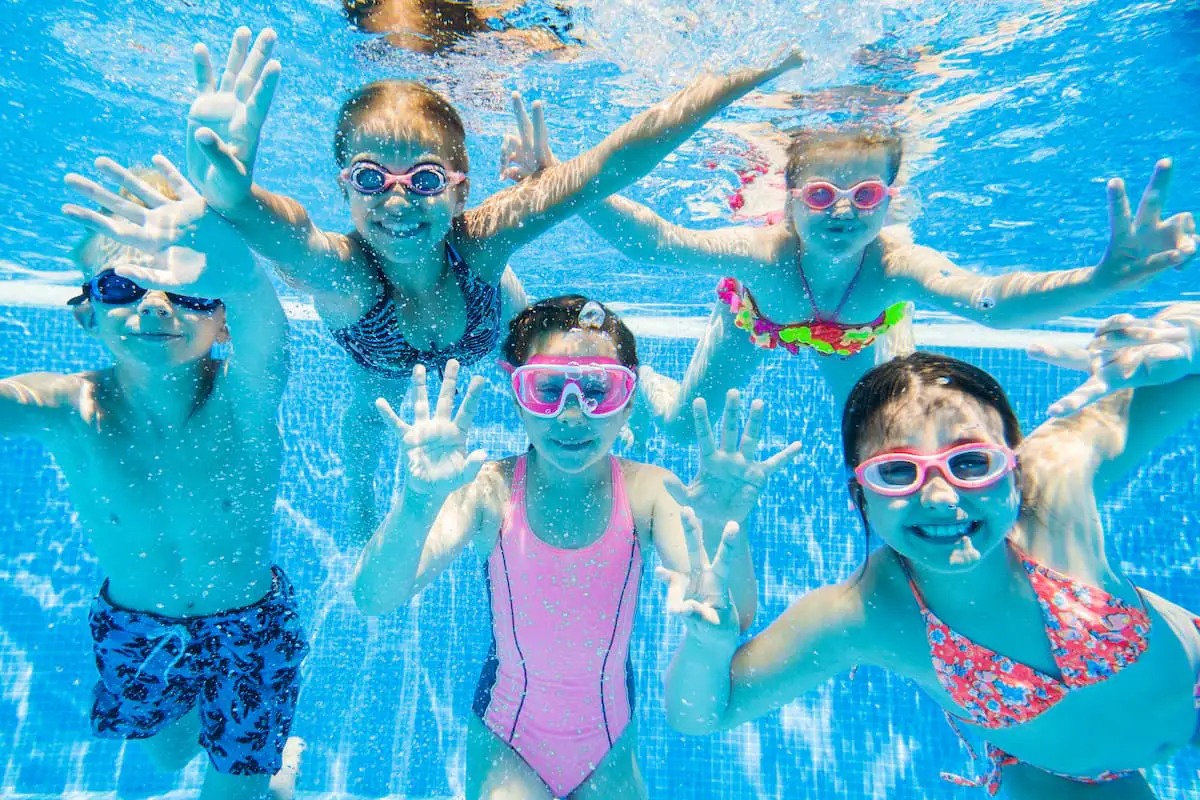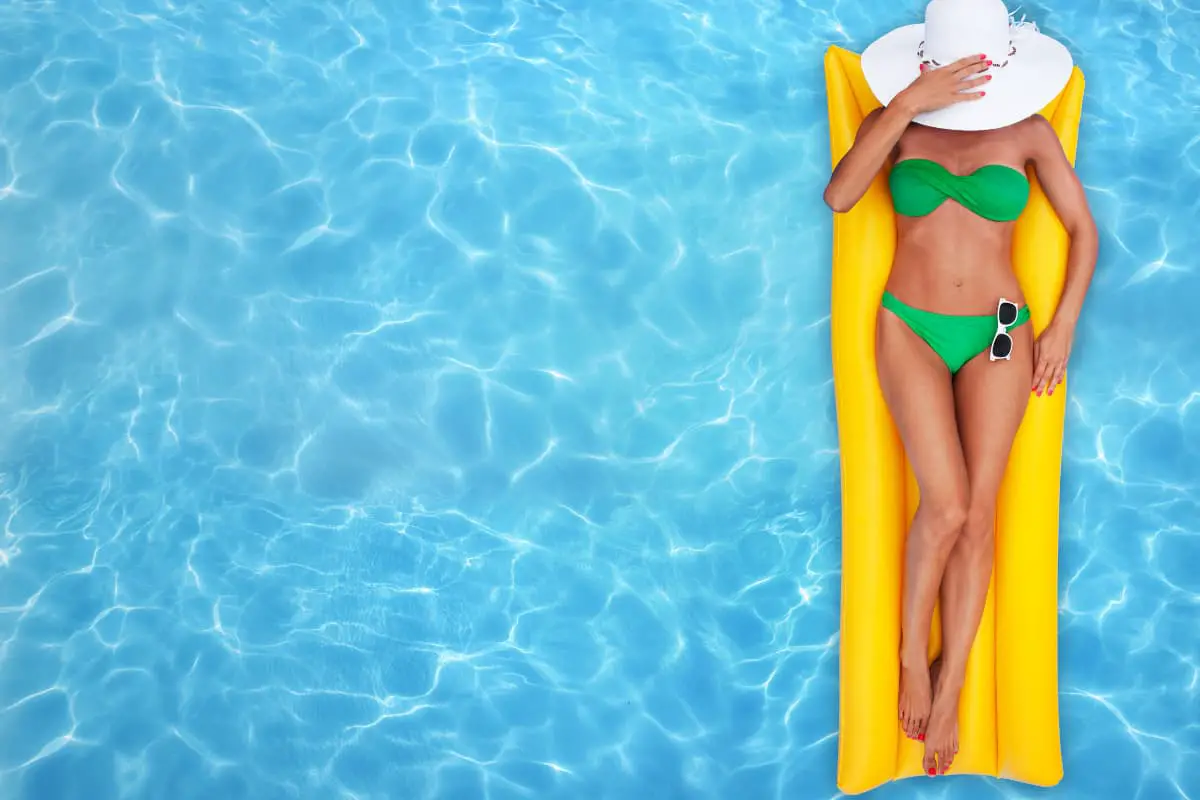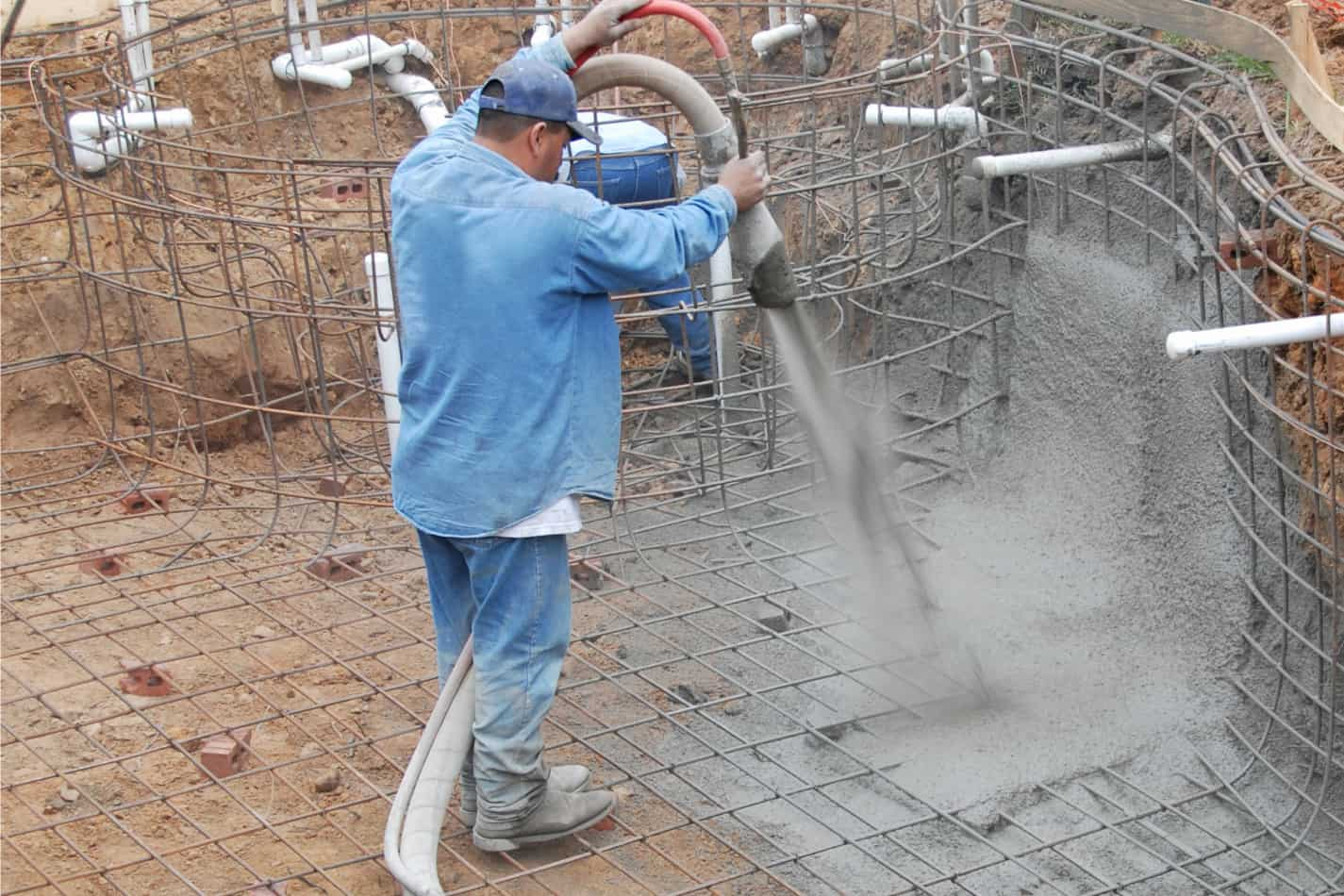Choosing the Best Pool Depth for Kids for Maximizing Fun

As an Amazon Associate I earn from qualifying purchases.
Whether you are buying your first house or simply need to find a way to entertain your children on a hot summer day, a pool is one of the most amazing things you can add.
Choosing one that will be affordable and long-lasting is a challenge that many owners find themselves in, with many homeowners making a small mistake on their first try.
The pool you choose needs to be at least 2 feet deep at one end, with stairs that lead into the pool and go to a comfortable 5 to 7 feet at the deep end. Getting a pool that has variable depth will allow your children to comfortably swim and jump in the deep end while walking on their feet in the shallow end.
A common mistake that many pool owners do now is buying a pool that is equally deep throughout, which is hard to control when you buy an above-ground pool.
However, if you are planning on installing a full pool at your home you need to know what sizes the best are, what shapes are the most liked, and what the optimal depth will be to ensure you never need a new pool.
Learn How to Manage Your Pool and Hot Tub
Frustrated trying to keep your pool clear? Feeling confused about when to add the right chemicals? Get the perfect easy-to-use, illustrated ebook and video course today!
What are the pool sizes for each age group?
As much as parents hate it or love it children do grow up and become freer and more free-willed, which means that the things they loved when they were younger may not be popular forever.
This affects the love or hate for pools as well with many parents quickly learning that each temporary pool may need to be replaced at certain ages.
There are hundreds of stories of pools bought by parents hoping to teach their children how to swim that are packed away and forgotten about once the children grow too large.
Understanding the depth that children need in their pools at each age will allow you to choose a pool that can last a lot longer, saving you money by not having to buy a new pool every two years.
Between the Ages of 1 and 6
If your house does not already have a built-in pool, these are the ages at which it is best to buy and use temporary above-ground pools.
These pools are all between 1 foot and up to 5 feet deep, which makes them perfect for children that are still learning to be in the water but are unable to swim.
It is vital to remember that while babies do know how to swim they still do need lessons as they grow older.
A negative of above-ground pools is that it is easier to drown in them than in normal pools, mostly because gaining access to them can be so hard.
Above-ground pools have flexible siding as well, which means that if you grab onto them then they will bend out of your way.
If you buy a pool that is deeper than your children are tall, you may have to be with them in the pool every single time they are swimming just because climbing up to get into the pool can be so challenging.
From 6 Years of Age and Older
This is when your child will want to start doing more than just learn to swim in the pool if you have been teaching them since they are young or they are going to a swim school this is the age at which they become rough.
Your pool will need to be deep enough so that when they land they cannot injure themselves on the bottom, usually being at least 5 feet deep, usually being just over 7 feet deep.
A pool at your home will never need to be Olympic pool levels of deep as a diving board of this height would be quite expensive.
However, a pool that is this deep may never go out of fashion and will allow you to safely enjoy it for many more years.
Pools of this depth should preferably be permanent below-ground pools; this allows for larger sizes and means that you can later add on hot tubs with ease.
Why Should You Choose a Deeper Pool?
When it comes to choosing a pool you may be surprised at how important choosing a deeper pool can be, even if your children are only about 1 foot high as of this moment.
Some pool owners make the mistake of installing splash pools when they have the space for something larger, regretting the decision when no one enjoys the pool a few years down the line.
Your pool needs to be deep enough that even when you or your teenage children decide to dive or jump into the pool no one will hit the bottom of the pool.
A pool that changes depth is the best solution to having one that lasts for the full duration that you have the pool. The best pools have shallow ends that are only two or three feet deep but tapers down to around 7 to 8 feet deep.
Having a deep pool is not a must, and if you can always stand even in the deepest end that won’t be an issue, however, a truly deep pool is a lot more fun than anything else.
Deep pools are enjoyable specifically because of the challenge and the fun of having to swim that they provide.
In more dangerous and extreme cases having a deep pool also means that you can place a trampoline next to the pool for more acrobatic events.
What Should Every Pool Have for Children?
Now that you know how deep the pool has to be, you need to know why temporary above-ground pools the best are not always.
Apart from the danger of the pool wall bursting and washing away every single thing you have placed in your yard, above-ground pools lack a fair few important features.
These are the features that young swimmer relies on more than almost anything else in the water, not having them can make many children afraid of swimming or unwilling to risk going deeper.
These are all things that we recommend ensuring your below-ground pool has, however, some modern designs lack these, and it may require that you do some extra work to find the perfect pool.
Step Based Entry and Exit
A pool in your home should never have a ladder, it may seem too damming to say this, but a pool at home should be easy to enter or exit.
Especially if you have young children that have access to the pool on limited occasions. Many children learn how to swim purely by standing on the steps and taking careful dives.
Gradual Incline
A gradual incline in the pool means that it goes from shallow to deep, which is something that many modern pools, especially splash pools, are without.
However, this incline serves the same purpose as the steps, allowing your children easy access to an area of the pool that they know they can comfortably swim or stand-in.
Sturdy Walls
The wall of a pool may look like just another thing and if you can already swim it is something you may ignore entirely.
However, if your children are still learning to swim they will cling for dear life onto the wall of the pool to ensure they are perfectly safe at all times.
Above ground, pools use mesh wiring or flotation systems to work, which means you physically cannot hang on them or risk them breaking.
Slow-Moving Nozzles
This is a stranger thing to consider, but the nozzles in your pool can affect the amount of fun your children have in it.
Most pools will have normal nozzles that are barely noticed after the first few days, however, sometimes these nozzles are modified to be a lot more aggressive.
Ensuring the nozzles don’t cause too much turbulence in the water can ensure that everyone has fun, you can always change the nozzles as everyone grows older.
What Are the Advantages of Each Pool Shape?
Now that you know the depth of each pool you need to know what the advantages are of each pool shape, especially as most owners will be confused about how exactly the shape can change so much about a pool.
Below ground pool can be almost any shape, with many of the best pools in the world being custom designed by the owners.
However, a pool that is completely custom will cost significantly more and can be a headache to install. Pools are made stock in several shapes, with rectangular pools being the most common shape of pool in the world.
Even pools that are made using concrete will usually be rectangular with no odd twists added in. Each pool shape has its advantages and understanding them will greatly help you choose.
Round Pools
Almost all above-ground pools will be round, some larger pools will be square or rectangular, but the ones that you can buy in-store will be round.
This allows the pool to be structurally stronger, which makes the pool significantly deeper when needed. Some of the best above-ground pools are those that adhere to this shape.
However, that does not mean you cannot find round pools that are in the ground, however, these are rare, usually being shaped rather like an oval or an egg.
These pools are significantly larger and will many times be able to have a few extra features added onto them. Round pools can be deceptively deep in the middle which makes them a great joy to dive into.
Rectangular Pools
All Olympic pools are rectangular, and so will most pools be that you can install at your house, some of the largest pools in the world are simply rectangular.
This is because this shape is easy to build and easy to dig, which allows the pool builders to add in extra features with more ease as well.
Further, pool cleaners are always effective at cleaning a rectangular pool where they may get lost or miss spots in more complex pools.
If you want to be safe and get a pool that you know won’t ever disappoint you then you need to invest in getting a rectangular pool.
These pools are often extremely deep on one end and will often be longer as well, allowing you to experience some training in the shape of a pool.
However, it should be noted that rectangular pools can more easily fall into the trap of being equally deep throughout.
Kidney Shaped Pools
Much more common in older pools or at resort locations are larger kidney-shaped pools, you have seen these at least once in your life.
They are always tapered down, from shallow on one end to rather deep on the other end. Which has made them popular with pool owners that want something out of the ordinary that they can keep for many years.
If you want a pool that easily and comfortably allows you to enjoy diving on one end, while younger children swim safely on the other end, then kidney bean-shaped pools are perfect.
If you are buying a premade pool the chances are they will be kidney bean-shaped as these are easier to transport in most countries and have become a favorite of most fiberglass pool makers.
When Should a Child Learn to Swim in Deeper Waters?
Deeper pools are amazing for children that can already swim without any help, however, if you have younger children or it is the first time that you are owning a pool then things change drastically.
It may come as a shock but many people who own pools forget that they need to teach their children how to swim in deeper water, usually not showing them the right moves.
If you can, you should be teaching your children how to float in water that is deeper than they are tall from the age of 4.
Removing helping floaters as they increase their skill level, having them go to deeper waters where they have to float without the aid of the ground being close by.
By the age of 6, most children should be able to swim relatively on their own even if they cannot touch the ground with their feet.
It is vital that you do this with all your attention on your child, teaching them to swim requires a pool in which no part of their body can touch the floor.
However, you need to be there to catch them if they ever do make mistakes or simply lose control of their floating potential. Some of the best swimmers start young and quickly become proficient.
Why Teenagers Prefer Deeper Pools
When your children grow up and they start having parties, the pool will usually become a focus of what they are doing.
Many times, your children may have friends over after school to enjoy the pool and have as much fun as they possibly can.
This is when the depth of your pool becomes vital, as teenagers never seem to enjoy water where they are always safe.
Deeper pools allow older children to have fun by either diving, playing games, or simply lounging with their bodies fully submerged.
A pool party can only be a party if everyone can enjoy the water to its fullest and choosing a pool that is deep now will mean that you have many more years of enjoyment.
Just be sure your pool water is always clear; you would be amazed at what can happen in pools while no one can see.
A deeper pool allows for more control of the situation as well, as few people would do weird things when they have to focus on staying afloat in the waters they are currently in.
Learn How to Manage Your Pool and Hot Tub
Frustrated trying to keep your pool clear? Feeling confused about when to add the right chemicals? Get the perfect easy-to-use, illustrated ebook and video course today!
Final Thoughts on the Best Pool Depth for Kids and Teens
A deep pool is always amazing and having fun will depend on how long everyone present can submerge their entire bodies.
Becoming a pool owner is about enjoying the water as well as ensuring that everyone else can enjoy it for as long as possible as well.
Just be sure the water is never so deep that no one can find a comfortable place to just stand!


